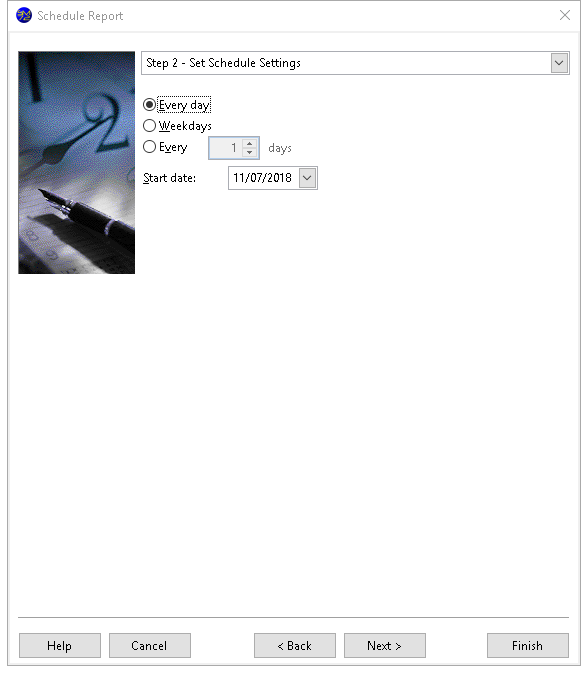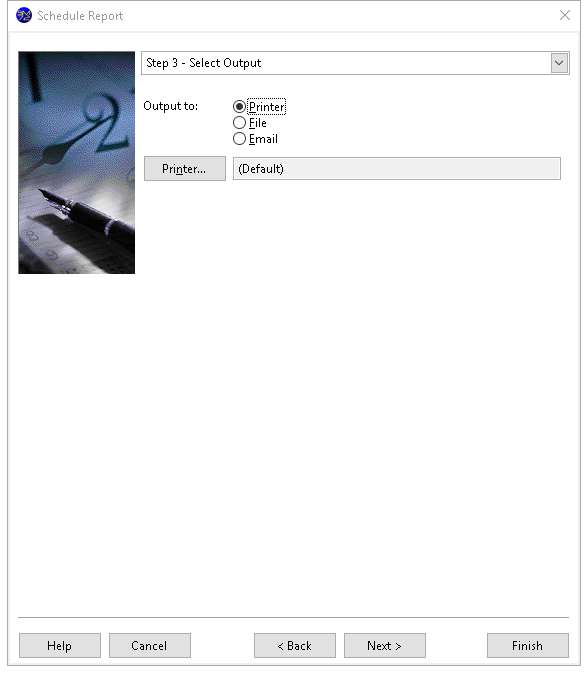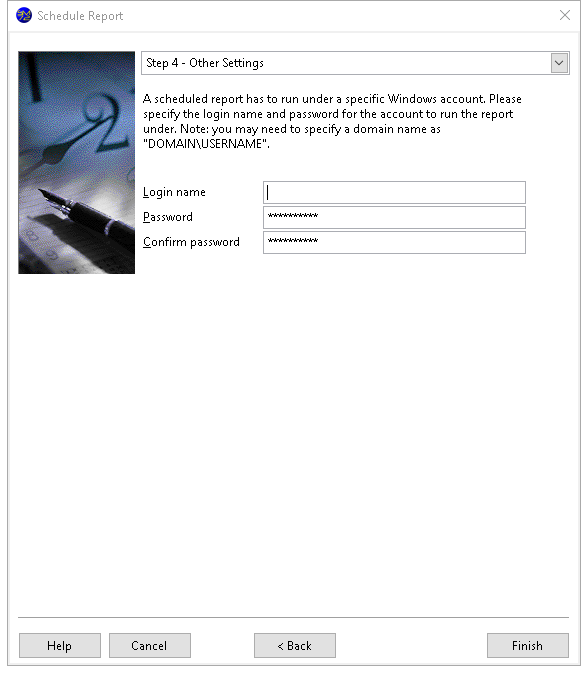Schedule Reports
Student Manager Reports has a scheduler that allows you to run certain reports at certain times. For example, you may have a report named Daily Activities that you want emailed to someone every morning at 7:00 am.
The Student Manager Reports scheduler uses the scheduler built into Windows to perform the actual report run but makes it easier to schedule a report than the Windows Scheduler program.
IMPORTANT
- The scheduler is not available if you are running Student Manager Reports on Citrix, you are not an advanced user, or you do not have an Ultimate license.
- You get a warning if you try to schedule a report that has ask-at-runtime filter conditions, since that prevents a scheduled report from running.
Here's how to schedule a report:
Select the desired report.
Choose Schedule Report from the Tools menu or right-click the report and choose Schedule Report from the shortcut menu.
In Step 1, specify the name to assign to the task (this name is used as the name for the Windows Scheduler task), how often the report is run (daily, weekly, or monthly), the time the report is run, and whether the report runs even if there are no records that match the filter conditions so you don't have to wonder why the schedule appears not to run when there's no output.
Click the Next button. Which options appear in the next step depends on whether you choose a daily, weekly, or monthly schedule.
For a daily schedule, specify whether the report runs every day, on weekdays only (Monday through Friday, inclusive), or every few days (specify how many days apart the report runs, such as every 3 days). Enter the date for the first run of the report.
- For a weekly schedule, specify how many weeks apart the report runs (such as every 3 weeks) and on which days to run the report.
- For a monthly schedule, specify whether the report runs on the same date of every month (for example, the 15th) or the same day (such as the second Monday). Specify which months the report runs in (the default is every month).
- Click the Next button and specify where the output is sent. The default is to print the report, but you can also choose to output the report to a file or email. The options in this step are the same as they are in the Output page of the Reports Explorer.
You cannot schedule a report to output to any Microsoft Excel format other than Microsoft Excel Data Only (Fast) or any Microsoft Word format because the other formats require running Excel or Word behind the scenes and they cannot be reliably run from a scheduled task as Microsoft themselves admit. You can output to Rich Text Format which can be opened in Word.
You'll get a warning if you schedule a report to output to or email a file on a mapped drive, since drive mappings don't work well in scheduled tasks.
- A scheduled report has to run under a specific Windows account, so click the Next button and enter the login name and password of the account to run the report under. Normally, this is your usual Windows user name and password. If you are on a network, you may need to specify the domain using "DOMAIN\USERNAME."
Note that the scheduled task cannot be saved if you don't have a password for your Windows account. The Schedule Wizard remembers the user name and password you entered last time you scheduled a report so you don't have to enter them every time you create a schedule.
- When you are finished specifying the settings for the schedule, click the Finish button. The report runs automatically on a regular basis according to the schedule settings.
To edit a schedule for a report, follow the same steps as above. Change any settings you wish and choose Finish (notice that you must enter the account information each time).
If you want to create a new schedule for the report, specify a different schedule name. The existing schedule for the report is left alone and a second schedule is created for the report when you choose Finish.
You can manage your scheduled reports using the Scheduled Tasks function in the Tools menu.
Report schedule settings are stored in an XML file using the same format as described in the Running from Other Applications topic in the Schedules subdirectory of the folder where your reports are stored. The name of the file is Schedule Name Parameters.XML, where Schedule Name is the name of the scheduled task.





